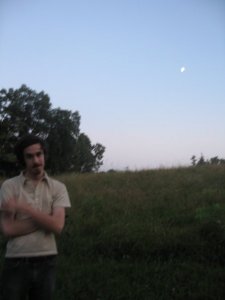As I understand it, slime mold consists of thousands of individual cell nuclei contained within a single membrane. The DNA information for these organisms is housed within this membrane (rather than the nuclear membrane, as is often the case with cells), so that all of the nuclei within the outer membrane share identical DNA. All of the nutrients and resources slime mold collects are carried throughout the entire membrane and the mold can "move" toward food (rotting organic matter) through the division of these internal nuclei. The nuclei that are closer to the nutrients split, creating more nuclei, while those farther from the nutrients die away, thus preserving nutrients for the entire mold. This extremely slow movement can be observed in time-lapse video:
What is most fascinating to me about slime mold is the way it accomplishes all of these tasks without the benefit of a central nervous system. Each of the cell nuclei are basically autonomous and are governed only by the collective goal of collecting food. This is a glaring contrast to the traditional hierarchy found in performing arts, where an artist/composer/genius gives her/his works to passive subservient performers, who subject an audience to the artist/composer/genius' wishes. By making the entire process oriented more towards goals that the performers, artist/composer, and audience all share, art can be more spontaneous and the experience can be shared collectively by everyone experiencing the work together. If the artist/composer's role were to provide the goal and the means to that goal, interesting, unexpected things could happen on the path.
These are some of the thoughts that have been on my mind when working with semi-improvised/semi-random audio and video with this current project. I'm sure that my understanding of slime mold is entirely incomplete and probably flat-out incorrect in many instances. But it's organic movement and ephemeral role in the food chain are really an inspiration for me and I hope that my work can capture some of the beauty of organisms like this.







